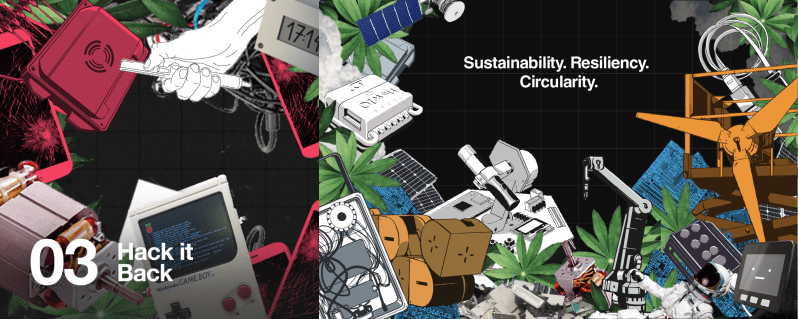Wow! We knew that the Hack it Back Challenge round of the Hackaday Prize would bring out the clever repairers among you, but we’re still impressed to see the results! This was a tough round for the judges, but they came up with a short list of ten finalists, and we’re pleased to bring them to you here.
The Hack it Back Challenge aimed to keep old gear from being thrown away by performing a heroic repair, giving it a new purpose in life, or otherwise bringing it back to a useful state. Of course, once you’ve got the box open, you start thinking of how to improve whatever the gadget is, and some of our finalists took that in unexpected directions.
Invasion of the Bodysnatchers
Some of the hacks took the form of inside-out redesigns. Let’s start off with some of the most ambitious. The Notkia (name change planned) project essentially gutted an old 1680 Nokia phone, wedging a more modern computer and array of peripherals inside. It’s such a joy to see a Linux kernel up and running on the device, you’d be forgiven for overlooking the fact that it’s no longer a phone but something else entirely – a pocket computer in a comfortable form factor. In common with Notkia, Put an RPi CM4 into an original iPad is another complete redesign that does just what it says on the tin. The quality of the reverse engineering, re-engineering, and complete re-imagining of the original iPad on display here is perhaps alone in terms of technical sophistication. Not bad for [Evan]’s “first real PCB project”.
[Jeremy]’s DuePrint takes over an old Stratasys Uprint SE+ 3D printer, replacing its mainboard with a Duet3D and its servo controllers with a Gecko Drive. The result is that the new printer works just as well as the original, talks WiFi, and uses open-source hardware and firmware. And [Sean Billups]’s Multispectral imaging smartphone camera peels the UV filter off of a cell phone camera, adds multiple filters in its place, and some software to tie it all together into a cool diagnostic tool.
Resto-Mods
For some of our entries, the nostalgia of the old device is an important part of the reason for saving it in the first place. Sure, you can simply print out your labels from your main printer, but there’s a certain something about the old Dymo-style label printers that drew [Andrei Speridião] to reimagine the device for the modern era with his E-TKT: anachronic label maker. Similarly, when [dsagman]’s old Vox amplifier cabinet went on the fritz, a Raspberry Pi and a modern Class D amplifier inside brought it back to its former glory, and then some.
Similarly, [Adalbert]’s Toshiba T3200 upgrade and [John Anderson]’s Audible Digital Dice Towers still look the part, but are more than they used to be.
Resto-Recreations
Finally, two of our finalists aimed to not simply hack back their own obsolete technology, but help us all do so, potentially preserving old tech for the future.
[Anders Nielsen]’s Simple Universal Modem is just that, but it’s also an interface that allows modern computers to speak with the ancients who used to store their bits on tape or even vinyl records. And [W. Jason Altice]’s Hack it Back View-Master preserves the old format in as much detail as possible, while also making it dirt simple to create a modern video presentation of the art. View-master films for the YouTube era!
Congratulations!
All told, our Hack it Back finalists richly deserve their $500 prizes, and will all be eligible to win the main prizes in the final round in November. In the mean time, the Hackaday Prize has moved on to the Climate Resilient Communities Challenge, and we’re all working on environmental sensors and distributed disaster-ready communications networks. Join in!
Thanks again to our sponsors Digikey and Hackaday’s parent company, Supplyframe, for sponsoring the 2022 Hackaday Prize.




























Wow! Much appreciated!
CONGRATULATIONS all! Nice projects!
More of this sort of thing!
Would love to see more reverse-engineering & open-sourcing of consumer electronics as a HaD challenge – it’s 2022, we’ve got DIY 3D printers but 2D printers remain a parade of DRM’ed misery and huge waste and we don’t have an open-source washing machine or dishwasher controller to keep old devices running.
Also IMHO there should be an ongoing prize fund for people who root each model of smartphone sufficiently that they can be re-purposed as universal Linux devices or similar, the capabilities of smartphones are insane and the e-waste mountain is unimaginable.
Wow! Thank you! Congratulations to all the winners!
definitely NOTKIA is good idea
meybe start in kickstarter or other way
i need it with lora
Congratulations to the winners and to all other participants!
What was done to the Heathkit shells gives me a feeling that something sacrilegious occurred.
My opinion only.